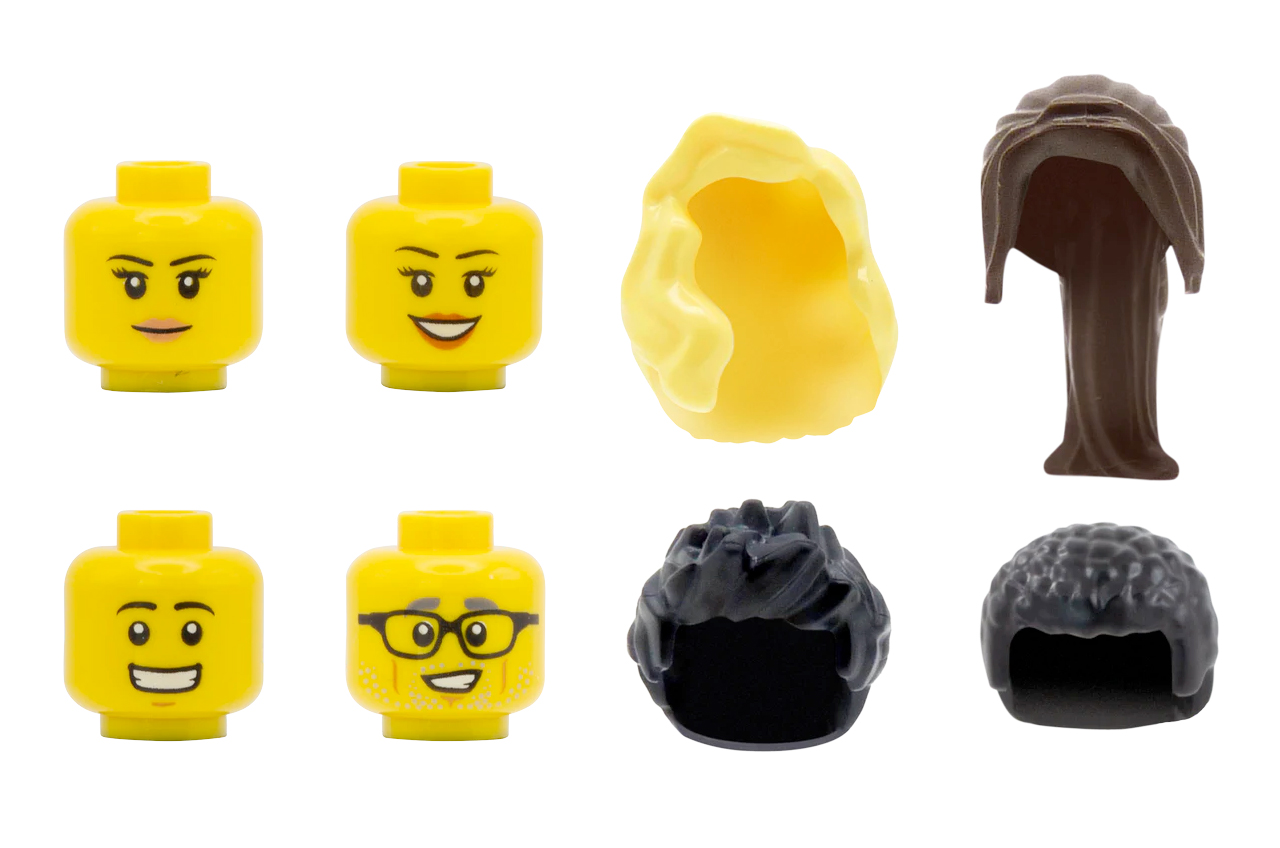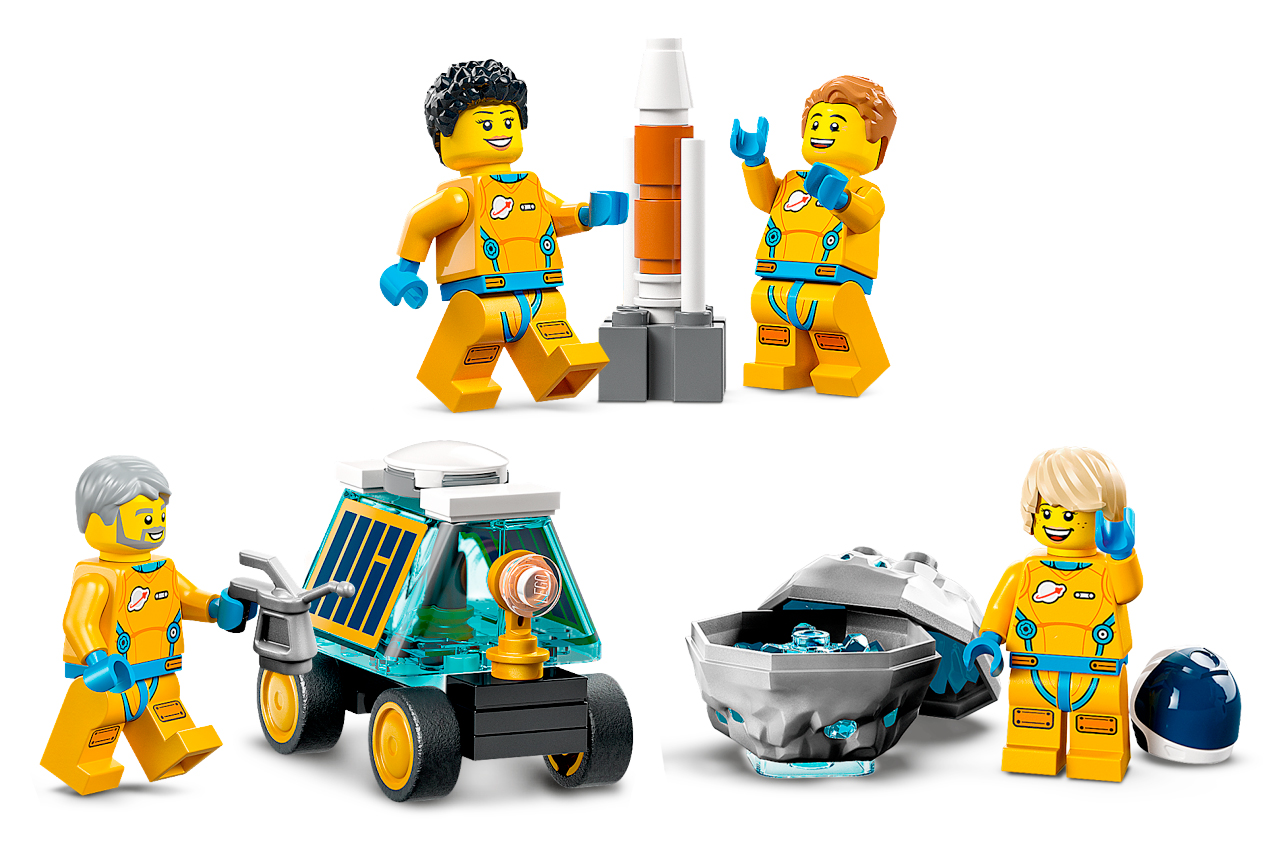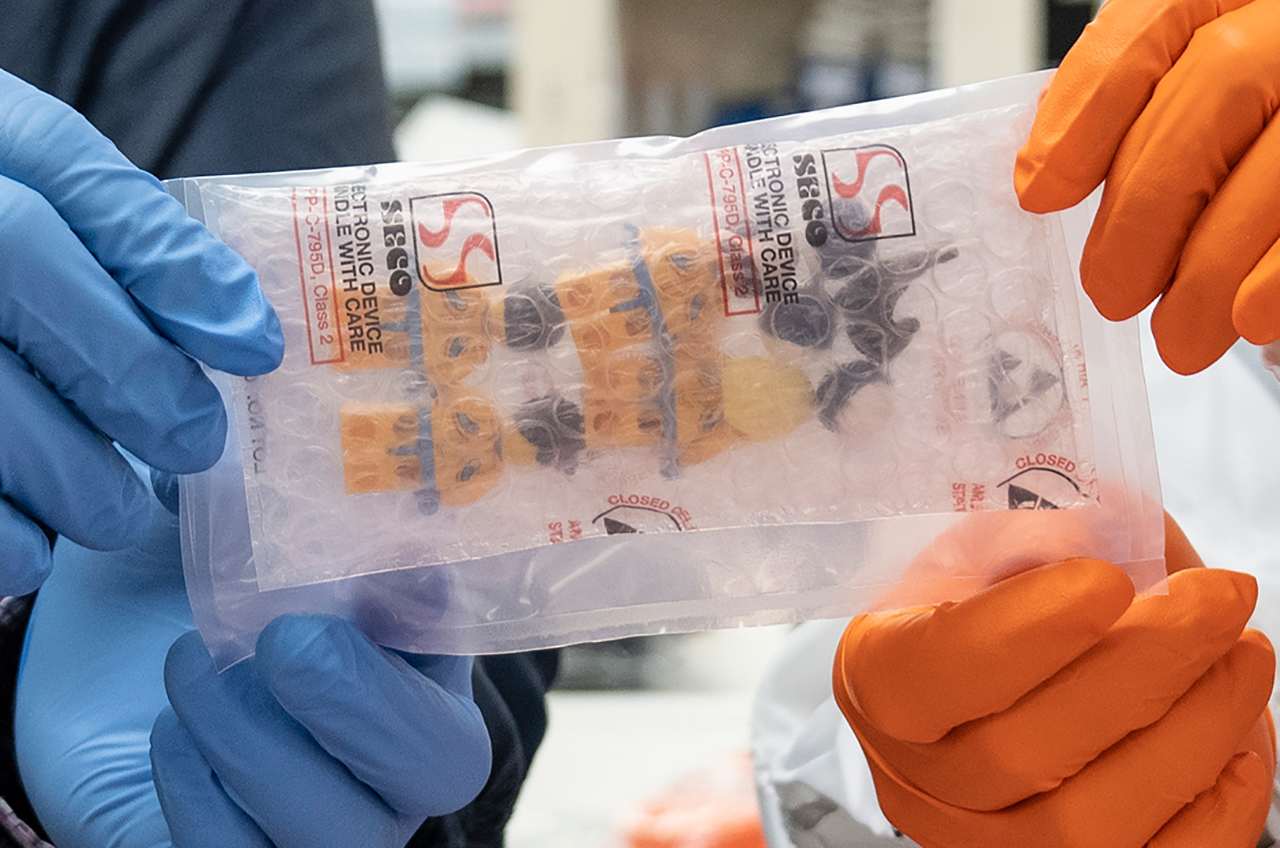Build your own Lego minifigures as flown to the moon on Artemis 1
Lego isn't selling an Artemis 1 minifig set, but you can assemble your own.

If NASA can send Lego minifigures to the moon, then you can assemble your own set at home.
The space agency, in collaboration with Lego Education, launched a crew of four diminutive astronauts on its Artemis 1 mission, which has already looped around the moon and is now on its way back to Earth. The flight's Orion spacecraft will test its heat shield as it plunges back into the atmosphere on Sunday (Dec. 11).
If all goes as planned, the capsule — with the minifigs packed on board — will splash down in the Pacific Ocean, off the coast of Baja California, where the U.S. Navy will be waiting to aid in its recovery. A successful landing will clear the way for NASA to fly four (full-size) astronauts on its next mission, Artemis 2, sometime in the next couple of years.
The Lego minifigures' own reason for flying was to promote science, technology, engineering, arts and mathematics (STEAM) education through a companion interactive digital learning series that featured the Lego Space Team showing students what it takes to launch a spacecraft to the moon. The curriculum, which was free to parents and teachers, built off the excitement of the Artemis 1 mission with 10 weeks of hands-on activities.
Unfortunately for Lego fans, the "Build to Launch" program did not include a way to get your own set of Artemis 1 minifigures. A common question shared on social media, Lego did not produce duplicates for sale.
But this is Lego, which means all you need is your imagination, some money and a guide like this one to build them yourself.
Artemis 1 launch photos: Amazing views of NASA's moon rocket debut
Breaking space news, the latest updates on rocket launches, skywatching events and more!

The right stuff
The Artemis 1 Lego crew includes Kate and Kyle, characters from the Lego Education SPIKE Prime classroom building sets, and Julia and Sebastian, minifigures from the Lego City line of toys. There is a catch, though. As first time astronauts, all four have new looks.
So it is not as simple as just finding their kits and uniting the crew.
Fortunately, Lego did not create any custom pieces when designing their crew. For past minifigure space missions to the International Space Station, Mars and Jupiter, the Denmark-based toy company has used specially printed parts, new molds and even special materials to produce sets impossible to collect. For Artemis 1, all the pieces are out there; you just need to know the right stuff to seek.
Each Lego component has its own ID number. Here are the pieces you need to assemble the astronauts. (BrickLink numbers are also listed in parenthesis; more on that below.)
Command Pilot Kate
Head: 4651443 (3626bpb0633)
Hair: 4527065 (62696 - dark brown)
Mission Specialist Kyle
Head: 6153335 (3626cpb1569)
Hair: 6079896 (98385 - black)
Julia
Head: 6100203 (3626cpb1211)
Hair: 4549990 (85974 - bright yellow)
Sebastian
Head: 6288015 (3626cpb2534)
Hair: 6122096 (21778 - black)
All four have the same torso, legs and helmets. Their suit details are based on the design of NASA's OCSS (Orion Crew Survival System) pressure suits that Artemis astronauts will wear for their launch from and splash down on Earth.
Torso: 6389826 (973pb4625c01)
Legs: 6384556 (970c110pb03)
Visor: 6390119 (89159)
Helmet: 6259946 (49663pb01)
Related: Lego space deals: holiday savings on spaceships, space stations and NASA kits

Recruiting your crew
There are a few ways you can go about acquiring the parts needed to assemble your own Artemis 1 Lego minifigures.
One way is to order the parts you need.
Lego's website has a section called "Pick A Brick" where you can look up and order individual Lego pieces. All the individual parts needed to build the minifigures are priced at under $1.00 each, though the site may not have all of the pieces needed. (At the time of this article, Pick A Brick did not have Kyle's hair and the legs needed for all four figures listed for order.)
Lego also owns BrickLink, a website where fans can buy and sell Lego pieces. BrickLink has a wider selection than Pick A Brick, but it is spread across many different sellers located around the world. Finding and ordering pieces are made easy by the site, but you may have to place orders with various stores to complete your want list.
Other independent (not owned or operated by Lego) marketplaces also exist. In addition to eBay for secondary sales, there are websites such as Brick Owl and Rebrickable that can help you source the pieces you need. (Minifigs.me, a custom minifigures retailer, also sells individual parts and helped source the pieces needed for the figures illustrated in this article.)
You can also find the pieces in other Lego building sets. For example, Julia's hair is included in the Lego People Pack – Space Research and Development set (60230) released in 2019, and Kate's head is a part used with a different minifigure that came with Shuttle Expedition (10231) sold in 2011.
You can look up additional product sets on BrickLink by searching for each piece or check if you already own the part by looking at the piece index at the back of most modern Lego instruction books.

The torso, legs and helmets for each figure is a new design introduced earlier this year with the release of five Artemis-inspired City line sets. You will need four bodies (and helmets), and there were five included across four of the products (Rocket Launch Center [60351] comes with two, and one each is included with the Lunar Space Station [60349], Lunar Research Base [60350] and Mars Spacecraft Exploration Missions [60354]).
There was also a minifigure in a foil pack (Sally Stardust's Satellite [952205]) included with the May 2022 issue of Lego City magazine, which includes the same head as used for Kate.
Once you have all the parts in hand, it is a simple matter of fitting each set of head, hair, torso and legs together. For additional authenticity, you can get a bubble wrap pouch to store them together, just as they were stowed aboard the Artemis 1 Orion.
collectSPACE.com is grateful to film and TV company Haviland Digital for supporting our Artemis I coverage. Their team has produced and supported titles such as the award-winning "Last Man on the Moon," "Mission Control: The Unsung Heroes of Apollo" and "Armstrong."
Follow collectSPACE.com on Facebook and on Twitter at @collectSPACE. Copyright 2022 collectSPACE.com. All rights reserved.

Robert Pearlman is a space historian, journalist and the founder and editor of collectSPACE.com, a daily news publication and community devoted to space history with a particular focus on how and where space exploration intersects with pop culture. Pearlman is also a contributing writer for Space.com and co-author of "Space Stations: The Art, Science, and Reality of Working in Space” published by Smithsonian Books in 2018.
In 2009, he was inducted into the U.S. Space Camp Hall of Fame in Huntsville, Alabama. In 2021, he was honored by the American Astronautical Society with the Ordway Award for Sustained Excellence in Spaceflight History. In 2023, the National Space Club Florida Committee recognized Pearlman with the Kolcum News and Communications Award for excellence in telling the space story along the Space Coast and throughout the world.

